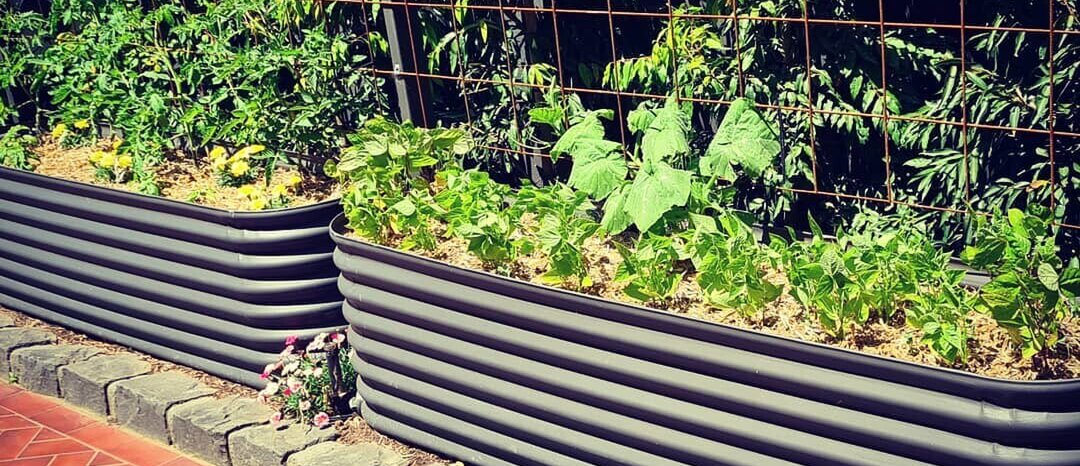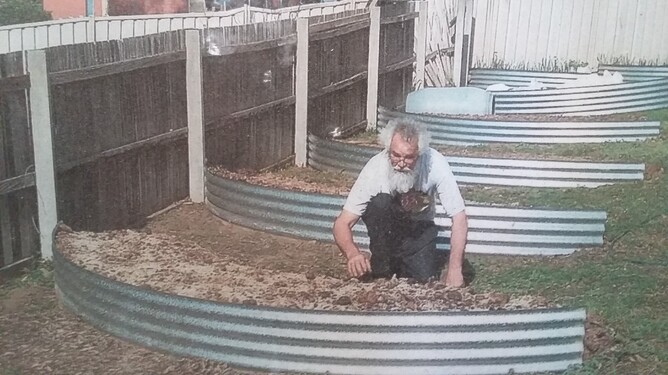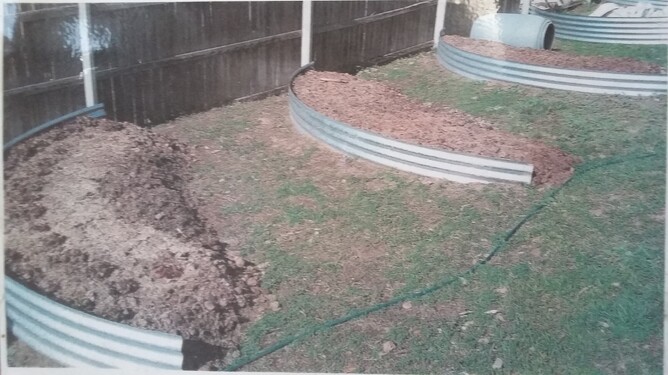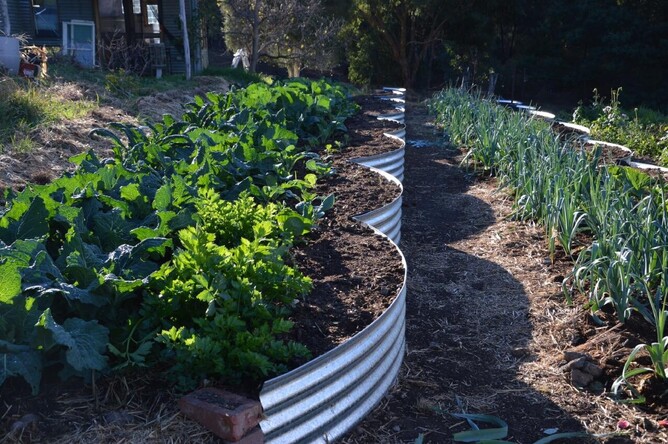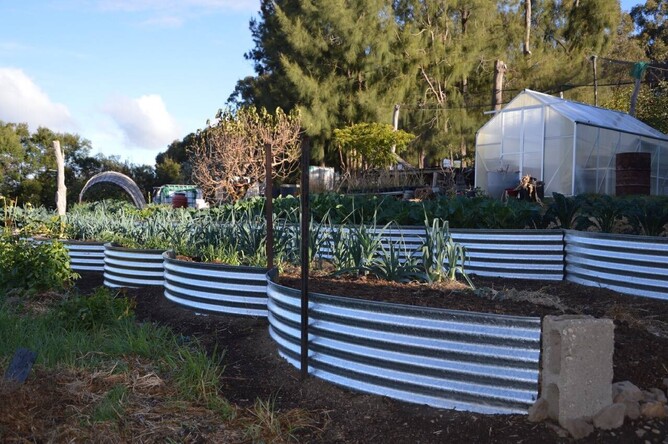A friend (and somewhat mentor gardener), known locally as Bare Foot Brian, came to me with a concept to prevent his back yard being washed down and across the road whenever it rained. Basically he wanted some sheets of corrugated iron rolled up into semi circles (Brian called them "curvy bits") that he intended to bury into the side of his hill of a back yard and back fill.
I thought they would simply topple over but made them for him all the same. They were sheets that I cut lengthways to make them 1' (300mm) high and were around 12' (4m) long and rolled to 8'3" (2.5m) diameter.
Partially burying them, Brian created a series of tiers all the way down the slope and then back filled them. He invited me to test their durability and to my great surprise they were extremely sturdy.
Performing as a swale, these are simple and cost effective. Whilst not only preventing erosion, they hold up precious water that would otherwise run away, in a win-win situation.
To install them Brian simply lays each sheet on the ground in it's intended position. He then uses a crude tool he calls his "Toothy thing" which is a heavy gauge wire (I'd say 8 - 10mm) which has been flattened on one end and bent to a 90° angle to scratch around the outside of the curve. He then removes the sheet and uses a hose to wet the area making the soil more pliable. Once it is soft enough to work he continues with the scratching, and using a (Brian speak again - "Handy dandy pick") creates a trench in the shape of the curve he used as a template. He digs in the ends to make it as level as possible when the curved sheet is replaced. Once he is satisfied he has this complete, he relays the sheet and gives it "a bit of a wiggle". Employing the use of the hose once more, he begins to fill what is now essentially a cup and uses the water as a level indicator. By continuously wiggling and seesawing the sheet he embeds both ends into the hill thus levelling the tier.
Having back filled them and planted them out, his slope is now a productive area that doesn't flood the neighbours or wash away the soil anymore. Check out how he does it here.
Since initially setting up these as an erosion inhibitor, other applications have sprung up and now there are literally dozens of different possibilities (and counting). Common Ground near Seymour have utilized this concept as shown below to create a multi tiered garden. Not only was it a cost effective retaining wall that produces well, it is also an aesthetic solution to a previous problem area.
